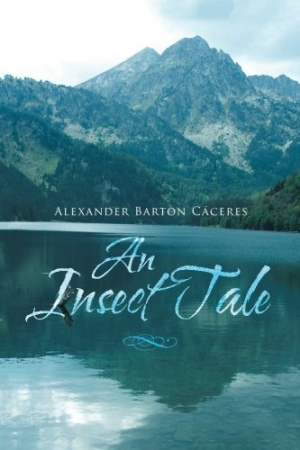
An Insect Tale
With battles, quests, political intrigues, and life-and-death struggles, An Insect Tale is a unique reimagining of high fantasy.
In An Insect Tale, by Alexander Barton Caceres, it’s up to three insects—a bee, a praying mantis, and a dragonfly—to wield their magic against overwhelming evil. This is an imaginative take on classic high fantasy.
Lazimóff, Grizwald, and Múzlak are filled with wonder when they first glimpse a bustling insect port town. The trio comes from the Lost Island, home to the magical Kaldáre, who for thousands of years have placed several of their own in Insectdom to keep peace among the different kingdoms. The three magicians, sent to relieve three of their order, plan to spend the next millennium in relative peace, acting as roving diplomats and mediators. Royal butterflies, savage wasps, wise snails, and a host of other bugs inhabit the realm.
Unfortunately, unbeknownst to the Kaldáre, dark forces simmer beneath the surface—literally. Below Insectdom is the foreboding Underworld, home to the reptilian Erkúns. The Erkúns, a warlike people, have long abided by the Peace of Tiba, a treaty that banishes them from the surface save for one ambassador. The current ambassador, the cunning Akran Súr, plays on the ambitions of a young snail king to open the door to terrifying subterranean creatures bent on claiming the surface at any cost.
There’s plenty of action in An Insect Tale—assassinations and ambushes abound. However, several key battles are summarized rather than shown, obscuring some of the most pivotal and potentially exciting scenes. In addition, large chunks of time often pass without warning, making it difficult to follow the narrative.
The match-up between the Erkúns and the surface insects also feels lopsided at times. The Erkúns—with their physical strength, magical powers, and hordes of bloodthirsty henchbugs—are virtually unbeatable right up until the moment they’re beaten. This makes it hard to root for the protagonists, who seem doomed for the majority of the novel.
Some of the most assured and engaging prose comes in the descriptions of settings and of the characters’ physical characteristics. Caceres describes everything—from the deserts of Karlún to the sweeping grasslands of Moriátin—with equal aplomb. The contrasts drawn between the Kaldáre and the Erkúns are also fascinating. Even though the Kaldáre believe their intentions are unimpeachable, both groups use their magical abilities to control Insectdom, raising intriguing questions about the nature of good and evil. As Akran Súr points out to Grizwald, “Your desire to control the filthy creatures of this world is as strong as ours!”
A map of Insectdom in the front matter is helpful for tracking the action. There’s also a preface that, while wordy in parts, explains the roots of the animosity between the Erkúns and the Kaldáre.
With its battles, quests, political intrigues, and life-and-death struggles, An Insect Tale is a unique reimagining of high fantasy.
Reviewed by
Anitra Budd
Disclosure: This article is not an endorsement, but a review. The publisher of this book provided free copies of the book and paid a small fee to have their book reviewed by a professional reviewer. Foreword Reviews and Clarion Reviews make no guarantee that the publisher will receive a positive review. Foreword Magazine, Inc. is disclosing this in accordance with the Federal Trade Commission’s 16 CFR, Part 255.
